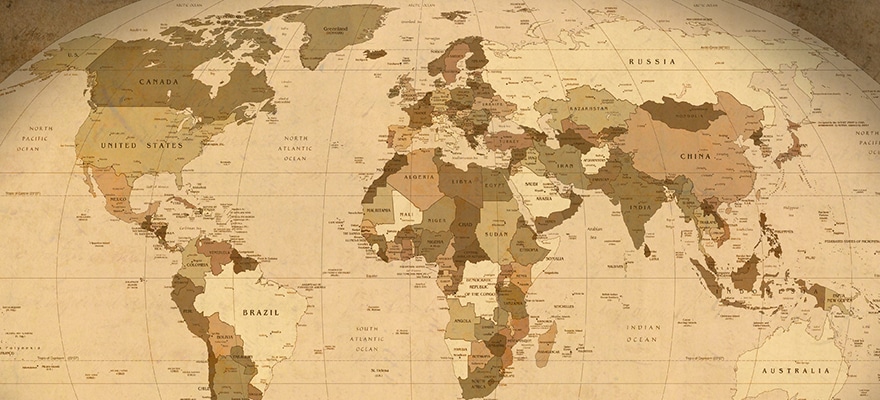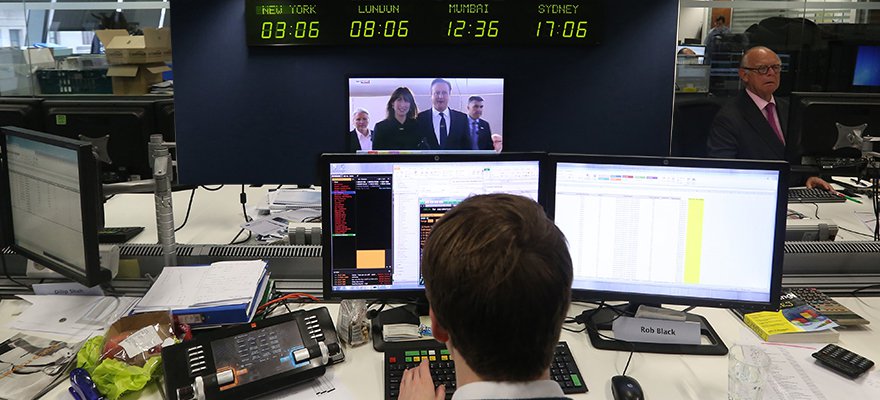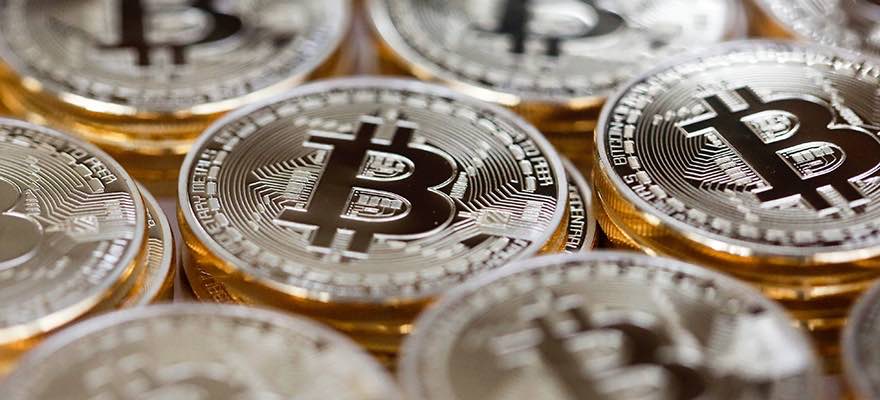This article was written by Jock Percy, CEO of Perseus.
When the BRIC acronym was first created in 2001 by Jim O’Neill, then chairman of Goldman Sachs Asset Management, it was to highlight the expected growth trajectory of the emerging market (EM) economies it represents – Brazil, Russia, India and China. More recently, South Africa has also been added to the concept – creating BRICS – and the notion that these non-Western nations represent future powerhouses of economic growth continues to this day.
Yet their expected rise, along with that of many other EM nations, was largely based on rich seams of commodities and natural resources. While this factor has indeed significantly changed their fortunes in recent years, I don’t believe this has been in the way initially envisaged.
Dispelling the China myth
The BRICS group is collectively one quarter of the world’s land mass and a significant proportion of its natural resources, though we have seen both Russia and Brazil fall into recession, with South Africa expected to follow this year.
Similarly, China, the world’s main consumer of raw materials and driver of global economic growth, currently has a growth forecast of 6.1% in 2017, down from 6.3% in 2016, according to a Moody’s report released in February, and a massive 100% reduction from 2007.
As China’s economy slows down, so too does its appetite for commodities and ultimately for investing in the commodity-rich nations of Africa and Latin America. So just what will this mean for EM economies and the global financial market as a whole?
The growing trade imbalance between EM countries and China is significant. For example, in 2015 China exported US$102 billion to Africa yet in turn imported only US$67 billion.
Weakening currencies are also making it increasingly difficult for African governments to repay China’s infrastructure loans. While it is certainly the case that a number of these EM nations remain heavily reliant on China’s demand for commodities, the true extent of China’s involvement in their respective economic downturns is often overstated.
The largest investor in Africa is actually the World Bank and only 3% of China’s foreign investment currently reaches Africa, according to the China-Africa Research Initiative.
One thing I’ve learned about doing business in China over the years is that it is never as good as people say it its, not is it ever as bad.
Ultimately, the economic problems of many EM nations tend not to be caused by falling commodity prices alone but are heavily influenced by political mismanagement and a continued failure to diversify their economies away from an over-reliance on commodities trading.
History repeating?
However, there may be a reprieve on the horizon for many of these commodity-centric markets. Since February, we have seen rises in certain commodity prices which in turn has helped to ease some of the pressure on EM currencies and Equities
Equities
Equities can be characterized as stocks or shares in a company that investors can buy or sell. When you buy a stock, you are in essence buying an equity, becoming a partial owner of shares in a specific company or fund.However, equities do not pay a fixed interest rate, and as such are not considered guaranteed income. As such, equity markets are often associated with risk.When a company issues bonds, it’s taking loans from buyers. When a company offers shares, on the other hand, it’s selling pa
Equities can be characterized as stocks or shares in a company that investors can buy or sell. When you buy a stock, you are in essence buying an equity, becoming a partial owner of shares in a specific company or fund.However, equities do not pay a fixed interest rate, and as such are not considered guaranteed income. As such, equity markets are often associated with risk.When a company issues bonds, it’s taking loans from buyers. When a company offers shares, on the other hand, it’s selling pa
Read this Term.
Globally, higher commodity prices have led to a rise in inflation expectations while the fear of global deflation appears to have decreased. And according to a study conducted by Invesco PowerShares Capital Management, commodities typically go through a boom-and-bust cycle every seven years.
It claims the current rally may have started in January and could run to 2018, with EM stock and bonds most likely to gain from the rise. This more positive outlook has been reflected recently as South Africa managed to avoid the expected downgrade to a junk credit rating by S&P Global Ratings in June.
There is significant interest to connect key emerging markets such as Johannesburg, Istanbul and Sao Paulo back to highly liquid mature markets in Tokyo, Hong Kong, London and Chicago. There are also a number of alternative EM-linked investment opportunities available for traders, investors and financial firms.
Other EM countries that have successfully diversified their economies beyond a heavy reliance on commodities - such as India, Thailand, Chile and Mexico - are sustaining notable levels of growth. Investing in EM debt provides exposure to a rebound, while ETFs with local EM currency exposure have equity-like risk and return, also helping to reduce currency Volatility
Volatility
In finance, volatility refers to the amount of change in the rate of a financial instrument, such as commodities, currencies, or stocks, over a given time period. Essentially, volatility describes the nature of an instrument’s fluctuation; a highly volatile security equates to large fluctuations in price, and a low volatile security equates to timid fluctuations in price. Volatility is an important statistical indicator used by financial traders to assist them in developing trading systems. Trad
In finance, volatility refers to the amount of change in the rate of a financial instrument, such as commodities, currencies, or stocks, over a given time period. Essentially, volatility describes the nature of an instrument’s fluctuation; a highly volatile security equates to large fluctuations in price, and a low volatile security equates to timid fluctuations in price. Volatility is an important statistical indicator used by financial traders to assist them in developing trading systems. Trad
Read this Term.
Likewise, the expected depreciation of the US dollar in the coming years can signal strong returns from EM stocks and bonds while also making gold a more attractive prospect
It is worth remembering that in 1999 EMs were in a similar downward spiral before entering a period of growth that lasted over a decade. While I doubt that the BRICS and EM recovery is on a steel-reinforced foundation just yet, it certainly remains volatile, and in light of the many complex challenges facing them beyond just a fall in global commodity prices, there are significant trading opportunities at this stage in the cycle.
This article was written by Jock Percy, CEO of Perseus.
When the BRIC acronym was first created in 2001 by Jim O’Neill, then chairman of Goldman Sachs Asset Management, it was to highlight the expected growth trajectory of the emerging market (EM) economies it represents – Brazil, Russia, India and China. More recently, South Africa has also been added to the concept – creating BRICS – and the notion that these non-Western nations represent future powerhouses of economic growth continues to this day.
Yet their expected rise, along with that of many other EM nations, was largely based on rich seams of commodities and natural resources. While this factor has indeed significantly changed their fortunes in recent years, I don’t believe this has been in the way initially envisaged.
Dispelling the China myth
The BRICS group is collectively one quarter of the world’s land mass and a significant proportion of its natural resources, though we have seen both Russia and Brazil fall into recession, with South Africa expected to follow this year.
Similarly, China, the world’s main consumer of raw materials and driver of global economic growth, currently has a growth forecast of 6.1% in 2017, down from 6.3% in 2016, according to a Moody’s report released in February, and a massive 100% reduction from 2007.
As China’s economy slows down, so too does its appetite for commodities and ultimately for investing in the commodity-rich nations of Africa and Latin America. So just what will this mean for EM economies and the global financial market as a whole?
The growing trade imbalance between EM countries and China is significant. For example, in 2015 China exported US$102 billion to Africa yet in turn imported only US$67 billion.
Weakening currencies are also making it increasingly difficult for African governments to repay China’s infrastructure loans. While it is certainly the case that a number of these EM nations remain heavily reliant on China’s demand for commodities, the true extent of China’s involvement in their respective economic downturns is often overstated.
The largest investor in Africa is actually the World Bank and only 3% of China’s foreign investment currently reaches Africa, according to the China-Africa Research Initiative.
One thing I’ve learned about doing business in China over the years is that it is never as good as people say it its, not is it ever as bad.
Ultimately, the economic problems of many EM nations tend not to be caused by falling commodity prices alone but are heavily influenced by political mismanagement and a continued failure to diversify their economies away from an over-reliance on commodities trading.
History repeating?
However, there may be a reprieve on the horizon for many of these commodity-centric markets. Since February, we have seen rises in certain commodity prices which in turn has helped to ease some of the pressure on EM currencies and Equities
Equities
Equities can be characterized as stocks or shares in a company that investors can buy or sell. When you buy a stock, you are in essence buying an equity, becoming a partial owner of shares in a specific company or fund.However, equities do not pay a fixed interest rate, and as such are not considered guaranteed income. As such, equity markets are often associated with risk.When a company issues bonds, it’s taking loans from buyers. When a company offers shares, on the other hand, it’s selling pa
Equities can be characterized as stocks or shares in a company that investors can buy or sell. When you buy a stock, you are in essence buying an equity, becoming a partial owner of shares in a specific company or fund.However, equities do not pay a fixed interest rate, and as such are not considered guaranteed income. As such, equity markets are often associated with risk.When a company issues bonds, it’s taking loans from buyers. When a company offers shares, on the other hand, it’s selling pa
Read this Term.
Globally, higher commodity prices have led to a rise in inflation expectations while the fear of global deflation appears to have decreased. And according to a study conducted by Invesco PowerShares Capital Management, commodities typically go through a boom-and-bust cycle every seven years.
It claims the current rally may have started in January and could run to 2018, with EM stock and bonds most likely to gain from the rise. This more positive outlook has been reflected recently as South Africa managed to avoid the expected downgrade to a junk credit rating by S&P Global Ratings in June.
There is significant interest to connect key emerging markets such as Johannesburg, Istanbul and Sao Paulo back to highly liquid mature markets in Tokyo, Hong Kong, London and Chicago. There are also a number of alternative EM-linked investment opportunities available for traders, investors and financial firms.
Other EM countries that have successfully diversified their economies beyond a heavy reliance on commodities - such as India, Thailand, Chile and Mexico - are sustaining notable levels of growth. Investing in EM debt provides exposure to a rebound, while ETFs with local EM currency exposure have equity-like risk and return, also helping to reduce currency Volatility
Volatility
In finance, volatility refers to the amount of change in the rate of a financial instrument, such as commodities, currencies, or stocks, over a given time period. Essentially, volatility describes the nature of an instrument’s fluctuation; a highly volatile security equates to large fluctuations in price, and a low volatile security equates to timid fluctuations in price. Volatility is an important statistical indicator used by financial traders to assist them in developing trading systems. Trad
In finance, volatility refers to the amount of change in the rate of a financial instrument, such as commodities, currencies, or stocks, over a given time period. Essentially, volatility describes the nature of an instrument’s fluctuation; a highly volatile security equates to large fluctuations in price, and a low volatile security equates to timid fluctuations in price. Volatility is an important statistical indicator used by financial traders to assist them in developing trading systems. Trad
Read this Term.
Likewise, the expected depreciation of the US dollar in the coming years can signal strong returns from EM stocks and bonds while also making gold a more attractive prospect
It is worth remembering that in 1999 EMs were in a similar downward spiral before entering a period of growth that lasted over a decade. While I doubt that the BRICS and EM recovery is on a steel-reinforced foundation just yet, it certainly remains volatile, and in light of the many complex challenges facing them beyond just a fall in global commodity prices, there are significant trading opportunities at this stage in the cycle.






















